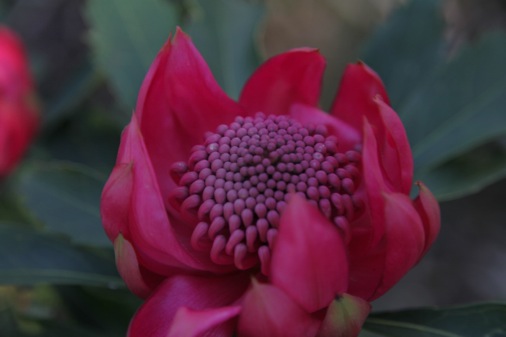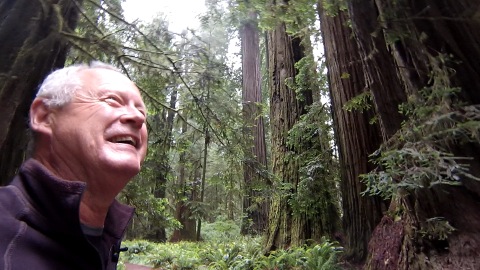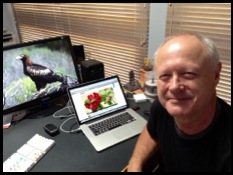Latest video gear for expedition filmmakers
03/03/14 17:06
Since my first Himalayan Hooker expedition in 2008 video gear has advanced quite a lot. Whilst the Sony EX1 camera is still an excellent camera, the advent of digital still cameras, such as the Canon 5D which can also shoot full HD video, has been a game changer. The other major advance is that very small full HD cameras such as the GoPro have enabled the getting of shots which were previously almost impossible.
So originally we used a Sony Ex1 with inbuilt sound recording, a shotgun Rode NTG2 mike in a wind blimp and occasionally a Sennheiser radio mike. Using the Canon 5D (mine is a Mk 2 with Magic Lantern software) has some advantages and disadvantages.
First of the advantages for me are that you can shoot guerrilla style. By this I mean that in locations where videoing is difficult for political or other reasons it looks like only a DSLR still camera is being used. This was the case in Sikkim where a large Army presence means that videoing was not easy. Far better not to video anything of any sensitivity and so not draw attention to oneself with big equipment. It is better using a tiny GoPro.
Secondly the very large sensor in the 5D means that a very shallow depth of field is possible. By this I mean that one can spotlight subjects such as a flower and have the background out of focus. Low light shooting is also better. Furthermore the quality of the footage is superlative. Interchangeable lenses mean that macro, extreme wide and telephotos results are also much better. Stills can be shot with the same equipment.
Disadvantages are fairly numerous and include the possibility of dust entering the camera when the lenses are changed, difficulty of zooming as there is no power zoom, difficulties in focusing due to no easy-to-see screen, difficulties in videoing small plants as the screen is not tilt-able. Poor quality internal sound amplifiers , etc. Most of these and other issues can be solved by adding additional equipment such as an external monitor and recording sound externally with a recorder such as the Zoom H4n, but before long you end up with a larger setup than before.
Despite these drawbacks the higher quality means that the Canon or other DSLR route is now usually preferred, even more so now that the Canon 5D Mk 3 produces even better results than the Mk 2, particularly in low light and where striped shadows are present (less moire). There has been an explosion of aftermarket equipment for these cameras and I list a few items which I consider necessities for shooting a botanical expedition film.
The first is a variable neutral density filter. This allows you to continue shooting with a shallow depth of field at around one-fiftieth of a second (necessary for good video footage) even if the light is strong. This is an absolute must have.
The second is a focusing aid. There are many rail based systems but for me they are too cumbersome. I use a simple cheap system made by FocusMaker see www.focusmaker.com. This is a great little tool for videoing plants as it allows a rack focus to be planned and easily executed. For example, focusing on one part of a plant with a shallow focus and then changing the focus during a pan , etc.
Thirdly a very small jib such as that made by Glideshot, see www.glideshot.com. This allows the camera to move not just by panning the tripod but also laterally and vertically. The result is a 3 dimensionality in the footage. I have modified my unit by cutting it in half and then joining it together with braces. This means that it now fits inside a regular suitcase. I have also added an extension bar with a sliding weight and use a bag as a weight which I fill with sand or rocks. In this way I carry the minimum weight. An external monitor is useful but not essential. However a good carbon fibre video tripod is a must. Mine is a Miller with a DS10 head when weight matters and a Compass 12 head when it doesn’t and I am after a very slow pan with no stutter. For altitude or when I have to carry everything myself I get away with an extremely light carbon fibre tripod with a tiny Manfrotto 128RC head but anchor it down well and don’t try to pan unless really necessary. I also have a 1 metre long set of rails and an electric programmable speed carriage which I use for time lapse sequences or vertical pans along a plant. Recently I videoed a beautiful waratah (telopea speciosissima) using the rails vertically so that the shot started on the stem and then very slowly climbed up the plant to reveal the spectacular flower.

Telopea speciosissima
Now to the GoPro:
How I wish I had had one of these in the Himalayas as I could have worn it on my hat or chest whenever the going was dangerous. I now have three of them and two are WiFi controlled from a wrist controller or my iPhone. They are cheap and I lend them to friends who are going to unusual places such as the Arctic or the Antarctic.
I recently used a GoPro3 in the USA while retracing the travels of Joseph Hooker and Asa Gray there in 1877. The first shot was at Penn Central station in New York. I used a GoPro on a short walking stick and recorded myself walking through the station talking to the camera. As it has a very wide angle lens everything is in focus and most people did not realise I was filming. I recorded sound on my iPhone using a Rode SmartLav microphone. See www.smartlav.com. This would have to be the simplest way to get good quality footage and sound on the move and without any crew.
In the sequoia forests of California the problem was how to show the size of the trees without very elaborate equipment. My solution was to install a GoPro on the roof of my car and then drive very slowly past some of the giants. Again the movement introduces a 3 dimensionality which helps convey size. This can then be intercut with slow pans from the Canon 5D to improve the quality of the sequence. In Redwood National Park it was raining so I used a GoPro on a walking stick in the rain (it comes in an underwater housing) again with the SmartLav and iPhone. I then had total freedom to walk amongst the trees and talk to the camera in very poor conditions.

GoPro screen shot in Redwood National Park, California
Next week: Back to Joseph Hooker
So originally we used a Sony Ex1 with inbuilt sound recording, a shotgun Rode NTG2 mike in a wind blimp and occasionally a Sennheiser radio mike. Using the Canon 5D (mine is a Mk 2 with Magic Lantern software) has some advantages and disadvantages.
First of the advantages for me are that you can shoot guerrilla style. By this I mean that in locations where videoing is difficult for political or other reasons it looks like only a DSLR still camera is being used. This was the case in Sikkim where a large Army presence means that videoing was not easy. Far better not to video anything of any sensitivity and so not draw attention to oneself with big equipment. It is better using a tiny GoPro.
Secondly the very large sensor in the 5D means that a very shallow depth of field is possible. By this I mean that one can spotlight subjects such as a flower and have the background out of focus. Low light shooting is also better. Furthermore the quality of the footage is superlative. Interchangeable lenses mean that macro, extreme wide and telephotos results are also much better. Stills can be shot with the same equipment.
Disadvantages are fairly numerous and include the possibility of dust entering the camera when the lenses are changed, difficulty of zooming as there is no power zoom, difficulties in focusing due to no easy-to-see screen, difficulties in videoing small plants as the screen is not tilt-able. Poor quality internal sound amplifiers , etc. Most of these and other issues can be solved by adding additional equipment such as an external monitor and recording sound externally with a recorder such as the Zoom H4n, but before long you end up with a larger setup than before.
Despite these drawbacks the higher quality means that the Canon or other DSLR route is now usually preferred, even more so now that the Canon 5D Mk 3 produces even better results than the Mk 2, particularly in low light and where striped shadows are present (less moire). There has been an explosion of aftermarket equipment for these cameras and I list a few items which I consider necessities for shooting a botanical expedition film.
The first is a variable neutral density filter. This allows you to continue shooting with a shallow depth of field at around one-fiftieth of a second (necessary for good video footage) even if the light is strong. This is an absolute must have.
The second is a focusing aid. There are many rail based systems but for me they are too cumbersome. I use a simple cheap system made by FocusMaker see www.focusmaker.com. This is a great little tool for videoing plants as it allows a rack focus to be planned and easily executed. For example, focusing on one part of a plant with a shallow focus and then changing the focus during a pan , etc.
Thirdly a very small jib such as that made by Glideshot, see www.glideshot.com. This allows the camera to move not just by panning the tripod but also laterally and vertically. The result is a 3 dimensionality in the footage. I have modified my unit by cutting it in half and then joining it together with braces. This means that it now fits inside a regular suitcase. I have also added an extension bar with a sliding weight and use a bag as a weight which I fill with sand or rocks. In this way I carry the minimum weight. An external monitor is useful but not essential. However a good carbon fibre video tripod is a must. Mine is a Miller with a DS10 head when weight matters and a Compass 12 head when it doesn’t and I am after a very slow pan with no stutter. For altitude or when I have to carry everything myself I get away with an extremely light carbon fibre tripod with a tiny Manfrotto 128RC head but anchor it down well and don’t try to pan unless really necessary. I also have a 1 metre long set of rails and an electric programmable speed carriage which I use for time lapse sequences or vertical pans along a plant. Recently I videoed a beautiful waratah (telopea speciosissima) using the rails vertically so that the shot started on the stem and then very slowly climbed up the plant to reveal the spectacular flower.

Telopea speciosissima
Now to the GoPro:
How I wish I had had one of these in the Himalayas as I could have worn it on my hat or chest whenever the going was dangerous. I now have three of them and two are WiFi controlled from a wrist controller or my iPhone. They are cheap and I lend them to friends who are going to unusual places such as the Arctic or the Antarctic.
I recently used a GoPro3 in the USA while retracing the travels of Joseph Hooker and Asa Gray there in 1877. The first shot was at Penn Central station in New York. I used a GoPro on a short walking stick and recorded myself walking through the station talking to the camera. As it has a very wide angle lens everything is in focus and most people did not realise I was filming. I recorded sound on my iPhone using a Rode SmartLav microphone. See www.smartlav.com. This would have to be the simplest way to get good quality footage and sound on the move and without any crew.
In the sequoia forests of California the problem was how to show the size of the trees without very elaborate equipment. My solution was to install a GoPro on the roof of my car and then drive very slowly past some of the giants. Again the movement introduces a 3 dimensionality which helps convey size. This can then be intercut with slow pans from the Canon 5D to improve the quality of the sequence. In Redwood National Park it was raining so I used a GoPro on a walking stick in the rain (it comes in an underwater housing) again with the SmartLav and iPhone. I then had total freedom to walk amongst the trees and talk to the camera in very poor conditions.

GoPro screen shot in Redwood National Park, California
Next week: Back to Joseph Hooker


